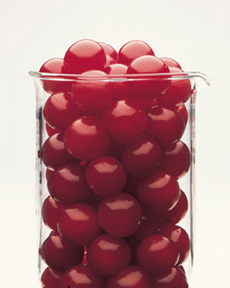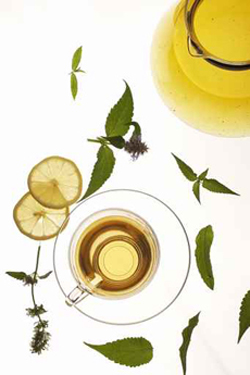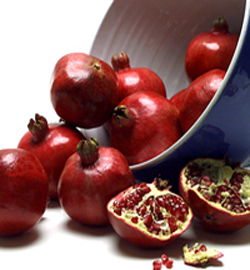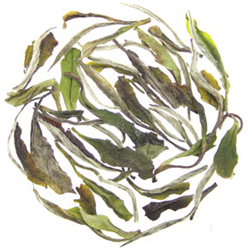A Guide To High-Antioxidant FoodPage 4: Glossary Of Antioxidant Terms & Definitions
|
 Tart (sour) cherries have the among the highest levels of antioxidants among fruits. They’re not sour, either; it’s just a term the trade uses as a distinction between the sweet and more tart varieties. Learn all about cherries. Photo courtesy Cherry Marketing Institute. |
|
|
ORAC
An acronym for Oxygen Radical Absorbance Capacity, ORAC is a test tube analysis that measures the total antioxidant power of foods. Findings to date suggest that eating plenty of high-ORAC foods (i.e., high antioxidant fruits, nuts and vegetables) may help fight disease and slow the aging processes in both the body and the brain. Phytochemicals are chemical compounds that occur naturally in plants; beta carotene from carrots is an example, as is lycopene from watermelon and tomatoes. Diindolylmethane, found in vegetables from the Brassica genus (bok choy, broccoli, brussels sprouts, cauliflower, cabbage, kale, kohlrabi, mustard greens and turnips, among others) is being tested against respiratory tumors, cervical dysplasia and prostate cancer. Cooking may destroy the phytochemicals, which is why a raw diet is popular among a growing group of health-focused consumers. A plant-derived essential nutrient that has been scientifically confirmed via research as important to human health. Examples include lignans, 3,3’-Diindolylmethane, selenium, sulphoraphane and vitamin C in broccoli; and coumarin, cryptoxanthin, ferulic acid, monoterpenes, oxalic acid and vitamin C in citrus fruits; and beta sitosterol, isoflavones, phytic acid, protease inhibitors and saponins found in soy.
|
||
|
POLYPHENOL
Polyphenols are a group of chemical substances found in plants. Research indicates that the flavonoids, a class of polyphenols, has antioxidant characteristics with potential health benefits that may reduce the risk of cardiovascular disease and cancer. Polyphenols are potent antioxidant compounds that have demonstrated greater antioxidant protection than vitamins C and E. Green tea may also increase the activity of antioxidant enzymes. Green tea polyphenols may inhibit cancer by blocking the formation of cancer-causing compounds and suppressing the activation of carcinogens. The major polyphenols in green tea are flavonoids: catechin, epicatechin, epicatechin gallate, epigallocatechin gallate (EGCG) and proanthocyanidins. Though both green tea and black tea are derived from the same plant (Camellia sinensis), they contain different antioxidants. In producing black tea, the leaves are allowed to oxidize; during the process, enzymes present in the tea convert many polyphenols to larger molecules with different biological effects. However, green tea is produced by lightly steaming the fresh-cut leaf, which inactivates these enzymes, and oxidation does not occur. Sources of polyphenols include peanuts, green tea, white tea, red wine, olive oil, dark chocolate, pomegranates and other fruits and vegetables. Chocolate or cocoa that has been processed with alkali (“dutched” cocoa) will not contain any polyphenols or antioxidants.
|

|
|
|
SUPERFOOD
There is no government definition, but a superfood is a natural food source that is highly concentrated, with a complex supply of quality nutrients. Bee pollen is the most famous superfood, an incredibly dense product with thousands of phytonutrients (plant nutrients) that include enzymes, bioflavonoids, phytosterols and carotenoids, free amino acids, Omega 3 essential fatty acids, naturally chelated minerals and whole vitamin complexes. Examples include cacao (which has been promoted as “dark chocolate,” but it is the cacao and not the finished chocolate bar that has the antioxidants), green tea and soy. A number of berries have very high levels of antioxidants and have been designated “superfruits” and “superberries.”
|
 Photo of cocoa powder and cacao beans courtesy of Schokinag.com. |
|
|
SUPERFRUIT
Sparked by a 2004 book on whole foods and nutrition, consumer interest in health and longevity has sparked research into antioxidants, identifying fruits that are nutrient- rich and have high antioxidant levels. The açaí berry is considered a superfood because of its extremely high level of anthocyanins (an antioxidant), vitamins A and C and omega 6 and 9 essential fatty acids, fiber and amino acids. Other superfruits include blueberry, cranberry, elderberry, goji berry (previously known by the unattractive name of wolfberry), mangosteen, noni, pomegranate and yumberry.
|
 Photo of pomegranates courtesy of Melissas.com. |
|
|
WHITE TEA
White tea is made mostly from the buds of the tea plant. White tea is not oxidized: The tea leaves are subject only to withering (wilting) and firing. The buds are withered in the shade while subjected to cool circulating air, to allow the moisture to evaporate, then are gently dried in natural sunlight. The most delicate-tasting of teas, white tea also has the highest concentration of antioxidants. The color of the dried tea is actually pale green; the curled-up white tea buds have a silvery/white appearance from the fine, silvery white hairs, or down, that cover the buds and young leaves. The taste is similar to the green tea, but sweeter and milder. White Peony (Bai Mu Dan) is the most common style of traditional white tea and consists of two tea leaves and a silvery bud. With tea, the “bud” is not a bud in the sense of a flower bud, but a budding tea leaf. The organic tea is available at Rishi-Tea.com. |

|
|
Last Updated May 2018
© Copyright 2005-2025 Lifestyle Direct, Inc. All rights reserved. All images are copyrighted to their respective owners.